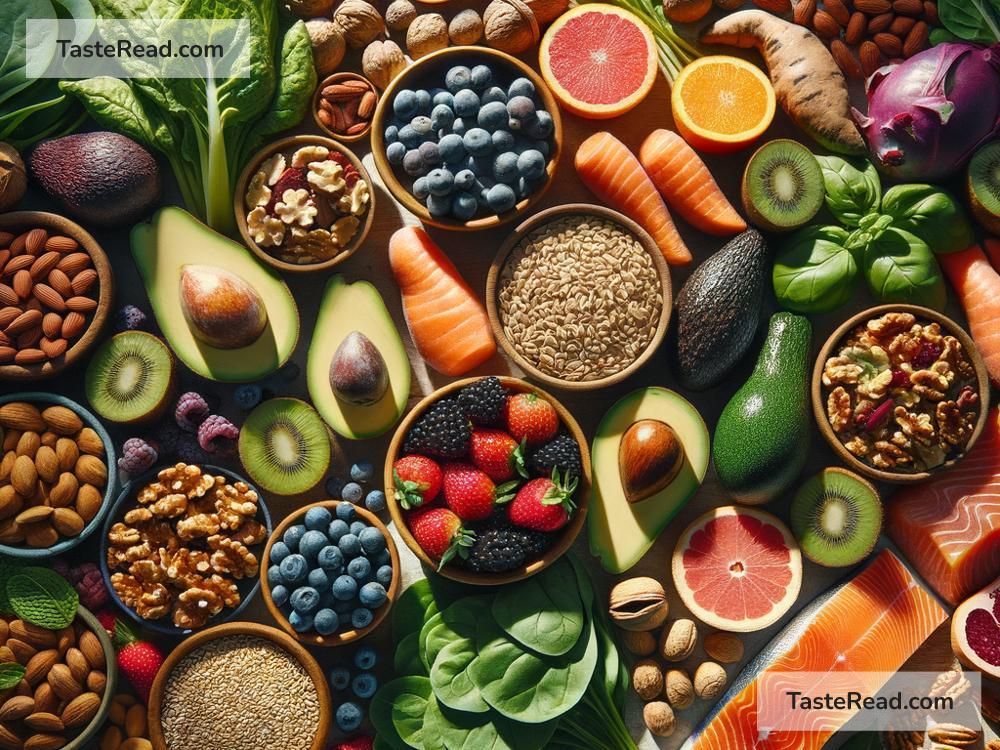Foods That Reduce the Risk of Insulin Resistance: A Simple Guide
In today’s world, many people struggle with health issues linked to insulin resistance. Insulin resistance happens when your body’s cells don’t respond well to insulin, a hormone that helps control blood sugar. When this occurs, glucose (sugar) builds up in the bloodstream instead of being absorbed into cells for energy. Over time, insulin resistance can lead to conditions like type 2 diabetes, heart disease, and obesity.
The good news is that your diet plays a big role in reducing the risk of insulin resistance. By making smart food choices, you can help your body process sugar more effectively and improve your overall health. In this article, we’ll explore some of the best foods to incorporate into your diet to lower the risk of insulin resistance.
What Causes Insulin Resistance?
Before we dive into the list of helpful foods, let’s quickly understand what can lead to insulin resistance. Common causes include:
- A sedentary lifestyle (lack of physical activity)
- Consuming too much sugar and processed foods
- Obesity, especially excess fat around the belly
- Chronic stress
- Poor sleep habits
While multiple factors contribute to insulin resistance, diet plays a key role in prevention and management.
Foods That Fight Insulin Resistance
The following foods are great for maintaining healthy blood sugar levels and improving insulin sensitivity:
1. Leafy Greens
Leafy greens like spinach, kale, and Swiss chard pack a nutritional punch without spiking your blood sugar levels. They are low in calories and carbohydrates but rich in fiber and antioxidants like magnesium and vitamin C. These nutrients help regulate blood sugar by improving how your cells use insulin.
How to Eat Them: Add leafy greens to salads, smoothies, or stir-fries. You can also sauté them with garlic for a simple side dish.
2. Whole Grains
Unlike refined grains (like white bread and pasta), whole grains contain all parts of the grain, including fiber, vitamins, and minerals. Fiber slows down digestion, preventing blood sugar spikes after meals. Brown rice, quinoa, oats, and whole-grain bread are excellent choices to stabilize blood sugar and reduce insulin resistance.
How to Eat Them: Swap white rice for brown rice, and choose oatmeal or whole-grain cereal for breakfast.
3. Fatty Fish
Fatty fish like salmon, mackerel, and sardines are high in omega-3 fatty acids, which are known to fight inflammation in the body. Chronic inflammation is a known risk factor for insulin resistance, so eating fatty fish can improve your body’s ability to use insulin properly.
How to Eat Them: Grill or bake fish for dinner, or add canned salmon or sardines to salads for a quick meal.
4. Nuts and Seeds
Nuts and seeds are full of healthy fats, protein, and fiber, making them excellent for blood sugar control. Almonds, walnuts, chia seeds, and flaxseeds contain nutrients that boost insulin sensitivity and reduce inflammation.
How to Eat Them: Snack on a handful of nuts, sprinkle seeds onto yogurt or salads, or add them to smoothies.
5. Beans and Legumes
Beans, lentils, chickpeas, and peas are rich in fiber, plant-based protein, and resistant starch—a type of carbohydrate that helps stabilize blood sugar levels. These foods keep you feeling full longer and reduce the risk of overeating, which can lead to insulin resistance.
How to Eat Them: Add beans and legumes to soups, stews, or salads, or make a lentil curry for a hearty dinner.
6. Berries
Berries like blueberries, strawberries, raspberries, and blackberries are packed with antioxidants and fiber. They have a lower glycemic index compared to other fruits, meaning they don’t cause a quick spike in blood sugar levels. The antioxidants in berries also help combat inflammation and oxidative stress.
How to Eat Them: Enjoy berries as a snack, add them to oatmeal, or blend them into smoothies.
7. Healthy Fats
Foods high in healthy fats, such as avocados, olive oil, and seeds, can improve your cells’ response to insulin. These fats help reduce inflammation and make meals more satisfying, so you’re less tempted to consume sugary snacks.
How to Eat Them: Use olive oil as a salad dressing, slice avocado onto toast, or include nuts and seeds in your meals.
8. Fermented Foods
Fermented foods like yogurt, kefir, sauerkraut, and kimchi contain probiotics—beneficial bacteria that improve gut health. A healthy gut plays an important role in regulating metabolism and insulin sensitivity.
How to Eat Them: Add a dollop of yogurt to breakfast or eat fermented vegetables with dinner.
9. Cinnamon
Cinnamon isn’t a food, but it’s worth mentioning because research suggests it can help lower blood sugar levels by improving insulin function. Sprinkle cinnamon on oatmeal, yogurt, or coffee for a small boost in insulin sensitivity.
Other Lifestyle Tips
While eating the right foods can help reduce the risk of insulin resistance, it’s also important to adopt other healthy habits:
- Exercise regularly: Physical activity helps your body use insulin more efficiently.
- Get enough sleep: Poor sleep can interfere with your body’s ability to process sugar.
- Manage stress: Chronic stress affects hormone levels and can worsen insulin resistance.
Final Thoughts
Insulin resistance doesn’t develop overnight, but the good news is that simple changes to your diet can make a big difference. Incorporating leafy greens, whole grains, nuts, seeds, fatty fish, berries, and other nutritious foods into your meals can help your body regulate blood sugar effectively. Combine these dietary choices with regular exercise, good sleep, and stress management for a holistic approach to better health. Start small, and remember: every healthy choice brings you one step closer to reducing your risk of insulin resistance and living your best life!


